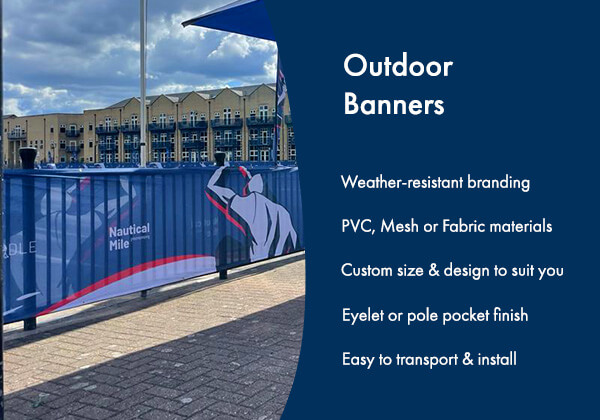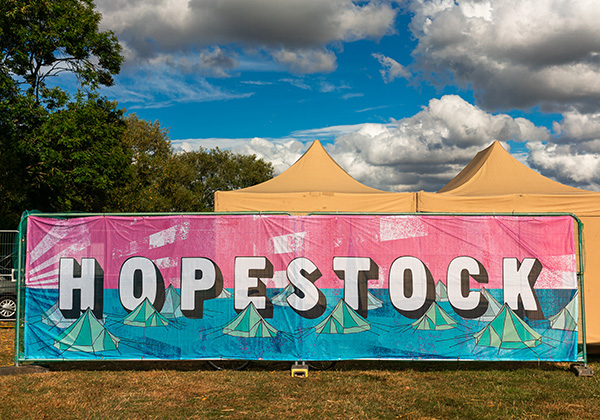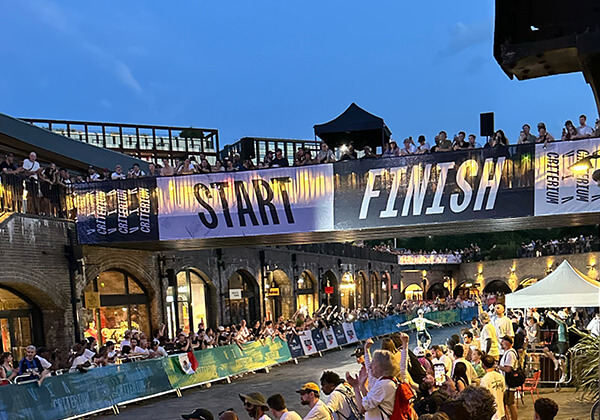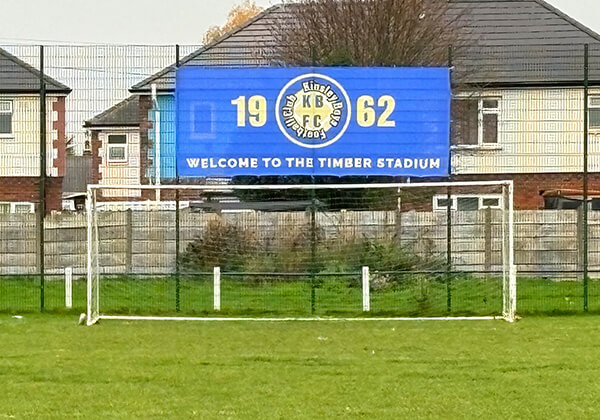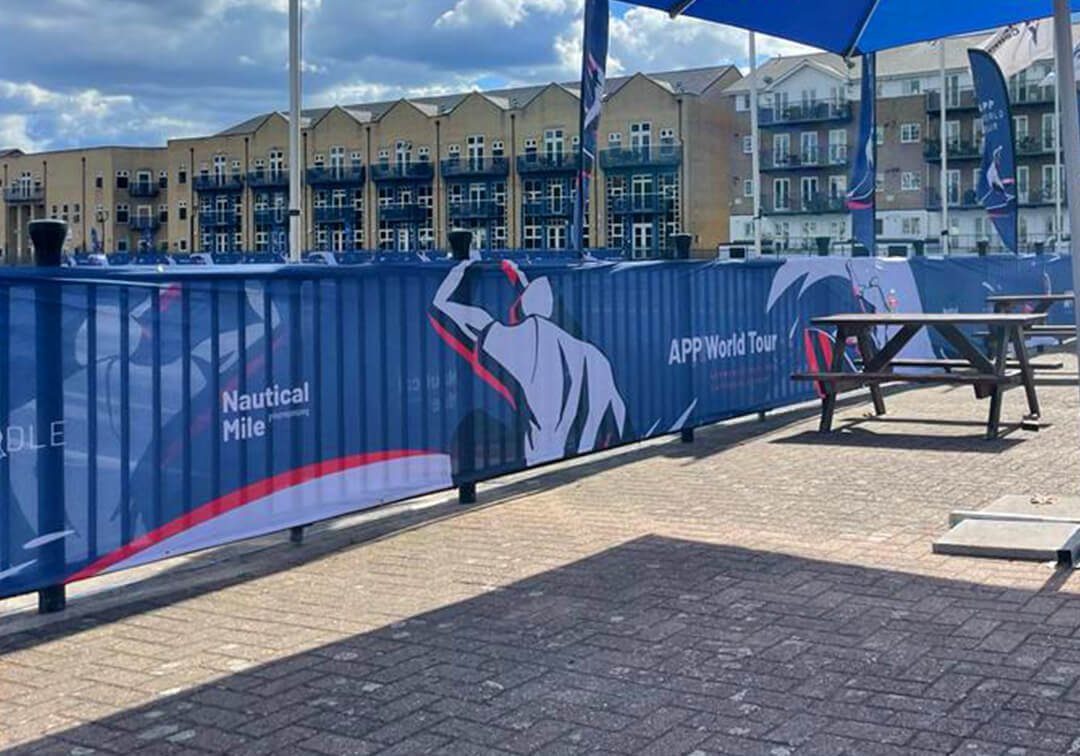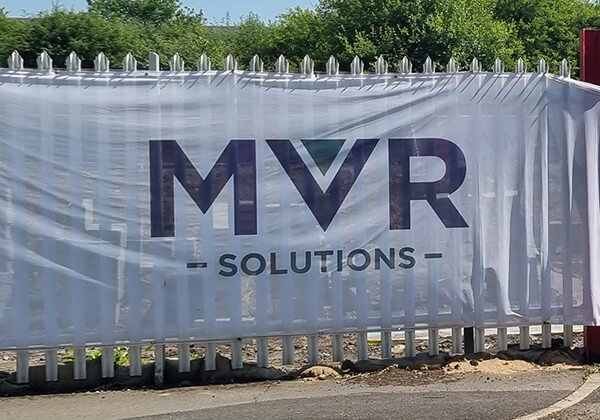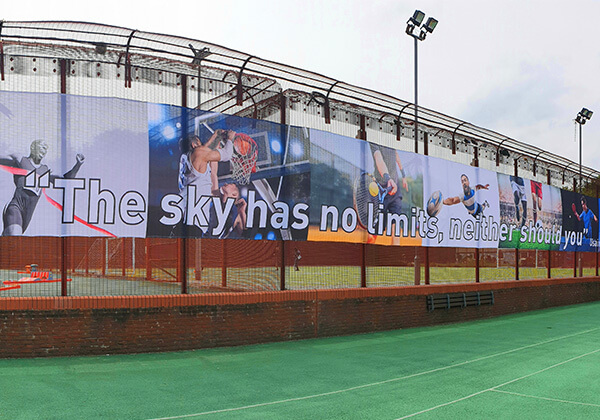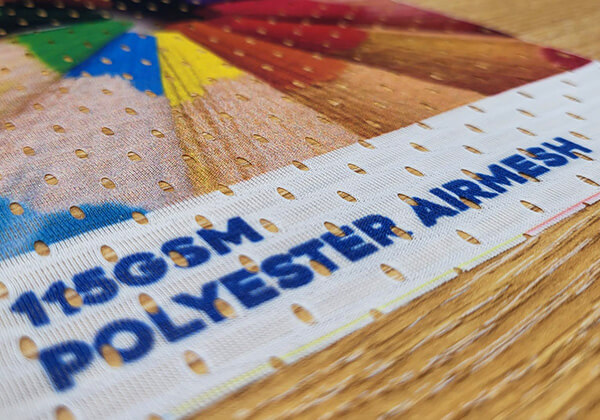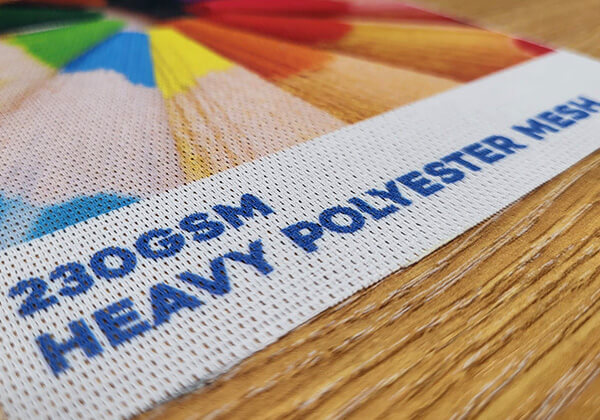FAQs
What is Outdoor Banner Printing
Outdoor banner printing is creating large-scale banners specifically designed to withstand outdoor conditions. These banners are commonly used for advertising purposes, outdoor events, trade shows, and more. They are made from durable materials that can withstand wind, rain, and sunlight, ensuring your message remains visible and vibrant even in challenging weather conditions.
What are Outdoor Banners used for?
Outdoor banners are used as signs on buildings or displays at events to help gain enquiries. Banner printing is an effective way to promote your construction brand, business, event, or message to a large audience. By choosing the right materials, sizes, and design elements, you can create eye-catching banners that withstand outdoor conditions and attract attention.
What is the best material for an outdoor banner?
When selecting the best material for an outdoor banner, several factors such as durability, weather resistance, print quality, and cost should be considered. The most commonly recommended materials for outdoor banners are:
1. Outdoor Vinyl Banners (PVC Mesh)
- Durability – Extremely durable and can withstand various weather conditions, including rain, wind, and sunlight
- Weather Resistance – Vinyl is waterproof and UV-resistant, making it ideal for long-term outdoor use
- Print Quality – High-quality print results with vibrant colours and sharp images
- Cost – Generally cost-effective, though prices can vary based on thickness and finishing options
2. Outdoor Mesh Banners (Polyester Airmesh)
- Durability – Similar to standard vinyl but with a mesh design
- Weather Resistance – Designed for windy conditions, as the mesh allows air to pass through, reducing the risk of tearing
- Print Quality – Good print quality, though slightly less vibrant than solid vinyl due to the mesh pattern
- Cost – Slightly higher than standard vinyl due to the specialised material
- Applications – Ideal for large banners in high-wind areas or for applications like fence wraps
3. Outdoor fabric banners (Heavy polyester mesh)
- Durability – Suitable for short to medium-term outdoor use
- Weather Resistance – Good resistance to weather but may not be as long-lasting as vinyl under harsh conditions
- Print Quality – Excellent print quality with vibrant colours, often used for more upscale or decorative banners
- Cost – Generally more expensive than vinyl, depending on the type and quality of the fabric
- Applications – Best for events, trade shows, and temporary outdoor displays
Recommendations
- For long-term use – PVC Mesh is the best option due to its superior durability and weather resistance.
- For windy areas – Polyester Airmesh is ideal to prevent damage from high winds
- For short-term or decorative use – Heavy Polyester Mesh can provide excellent print quality and an upscale appearance.
Outdoor Banner Design Tips
Designing an effective outdoor banner involves several key considerations to ensure that it grabs attention and effectively communicates your message. Here are 9 useful tips for creating an impactful outdoor banner:
1. Clear and Concise Messaging
Use short, direct messages. Outdoor banners are often viewed from a distance and for a short duration, so clarity is crucial. Highlight the most important information, such as the main message, event name, or promotional offer.
2. High-contrast colours
Choose high-contrast colour combinations to ensure the text stands out against the background (e.g., black text on a white background). Bright, bold colours attract attention and are more easily seen from afar.
3. Large, legible fonts
Use large fonts so that your text is readable from a distance. A general rule of thumb is at least 1 inch of letter height for every 10 feet of viewing distance. Opt for clean, sans-serif fonts like Arial, Helvetica, or Impact, which are easier to read quickly.
4. High-Quality Images and Graphics
Ensure all images and graphics are high-resolution (at least 300 DPI) to prevent pixelation. Use images and graphics that are relevant to your message and support your text.
5. Effective use of space
Don’t overcrowd your banner. Leave sufficient whitespace to make the design clean and easily readable. Organise content hierarchically to guide the viewer’s eye from the most important to the least important information.
6. Incorporate Branding
Use your brand’s logo and colour scheme to maintain consistency and reinforce brand recognition. Include your business’s website, phone number, or social media handles for easy follow-up.
7. Consider Viewing Distance and Angle
Think about where the banner will be placed and ensure the design is visible and readable from the intended distance and angle. Make sure the banner size is appropriate for the location. Larger banners for longer viewing distances, smaller ones for closer inspection.
8. Call to Action
Include a clear call to action (CTA), such as “Visit Us Today,” “Call Now,” or “Limited Time Offer”. Position the CTA prominently on the banner to encourage immediate action.
9. Proof and Test
Check for spelling and grammatical errors to maintain professionalism. If possible, create a mockup of the banner in its intended location to see how it will appear in real-life conditions.
Outdoor banner installation tips
Hanging a banner outdoors effectively requires considering the banner’s location, the type of surface you’ll attach it to, and the environmental conditions it will face. Here are various methods and tips to ensure your banner is securely and visibly displayed:
1. Using Eyelets and Tie Wraps/Bungee Cords
Materials needed:
- Tie wraps or bungee cords
- Outdoor banner with eyelets
Steps:
- Locate Attachment Points: Identify sturdy points where you can tie the banner (e.g., poles, fences, or hooks)
- Thread Through Grommets: Thread the tie wraps or bungee cords through the eyelets.
- Secure the Banner: Tie the cable ties or hook the bungee cords securely to the attachment points, ensuring the banner is taut but not overstretched.
2. Using Pole Pockets
Materials needed:
- Outdoor banner with pole pockets
- Poles
Steps:
- Insert Poles: Slide the poles through the pockets at the top and bottom (or sides) of the banner
- Mount the Poles: Secure the poles to fixed points ensuring they are stable and can withstand wind
3. Using a Banner Frame
Materials needed:
- Banner frame kit
Steps:
- Assemble the Frame: Follow the manufacturer’s instructions to assemble the frame
- Attach the Banner: Secure the banner to the frame using hooks or ties included in the kit
- Position the Frame: Place the frame in the desired location and anchor it securely to the ground or another stable structure
4. Attaching to a Building
Materials needed:
- Screws or nails
- Washers
- Drill or hammer
Steps:
- Mark Attachment Points: Mark where the eyelets will align on the building
- Drill Holes: Drill holes at the marked points (if using screws) or hammer nails directly
- Secure the Banner: Place washers over the grommets and screw or nail them into the building, ensuring the banner is flat and taut
Tips for Hanging a Banner Outdoors
1. Choose a Sturdy Location:
Ensure the attachment points are strong enough to hold the banner, especially in windy conditions.
2. Check for Tautness:
Make sure the banner is taut to avoid flapping, which can cause wear and tear.
3. Consider Weather Conditions
Use weather-resistant materials (e.g. PVC Mesh) and secure methods to withstand elements like wind, rain, and UV exposure
4. Regular Maintenance:
Periodically check the banner for any signs of wear and re-secure it if necessary.
By using these methods and tips, you can ensure your outdoor banner is effectively displayed and remains in good condition for the duration of its use.
How long do banners last outside?
The lifespan of outdoor banners depends on several factors, including the material of the banner, the environmental conditions it is exposed to, and the quality of its installation and maintenance. Here’s a breakdown of the typical lifespan of outdoor banners based on different materials and conditions:
1. Material Type
- Mesh Vinyl (PVC) Banners: Typically, high-quality vinyl mesh banners can last between 2 to 5 years when properly maintained. They are durable and resistant to weather conditions like rain, wind, and sunlight.
- Mesh Banners (Polyester Airmesh): These banners usually last between 6 months to 1 year outdoors. Their perforated design makes them particularly suitable for windy conditions, which can extend their longevity.
- Fabric banners (heavy polyester mesh): These banners usually last between 6 months to 1 year outdoors. They offer excellent print quality but are less durable in harsh weather conditions compared to PVC Mesh or Polyester Airmesh.
2. Environmental Conditions
- Sun Exposure: Prolonged exposure to direct sunlight can cause colours to fade and the material to degrade. UV-resistant coatings can help extend the lifespan.
- Weather Conditions: Extreme weather, such as heavy rain, strong winds, and snow, can reduce a banner’s lifespan. Choosing the right material and installation method can mitigate some of these effects.
- Pollution and Dirt: In urban or industrial areas, pollution and dirt can accelerate wear and tear. Regular cleaning can help maintain the banner’s appearance and longevity.
3. Installation and Maintenance
- Proper Installation: Ensuring the banner is securely fastened and taut can prevent damage from wind and reduce wear at attachment points. Using reinforced edges and grommets can also enhance durability.
- Regular Maintenance: Periodically checking and cleaning the banner can help extend its life. Promptly addressing any tears or loose attachments can prevent further damage.
- Regular cleaning: Dirt, dust, and pollutants can accumulate on outdoor banners, affecting visibility. Clean them periodically using mild soap, water, and a soft cloth. Avoid harsh chemicals or abrasive materials that can damage the print or material.
- Storage: When not in use, store your outdoor banners properly to protect them from environmental elements. Roll them tightly and store them in a cool, dry place away from direct sunlight. Avoid folding banners if possible to prevent creases.
Tips to extend the lifespan of outdoor banners
By selecting the appropriate material for your specific conditions and maintaining the banner properly, you can maximise its lifespan and ensure it remains effective throughout its use.
- Use UV-resistant inks and Coatings: These can significantly reduce fading and material degradation due to sun exposure.
- Reinforce Edges and Grommets: Reinforced edges and heavy-duty eyelets can prevent tearing, especially in windy conditions.
- Install Tautly: Ensure the banner is pulled taut during installation to minimise movement and flapping, which can cause wear.
- Choose the Right Location: Whenever possible, place banners in locations that offer some protection from the elements, such as under eaves or against buildings.
- Regular Cleaning and Inspection: Clean the banner periodically with mild soap and water to remove dirt and pollutants. Inspect for any damage and make repairs as needed.








